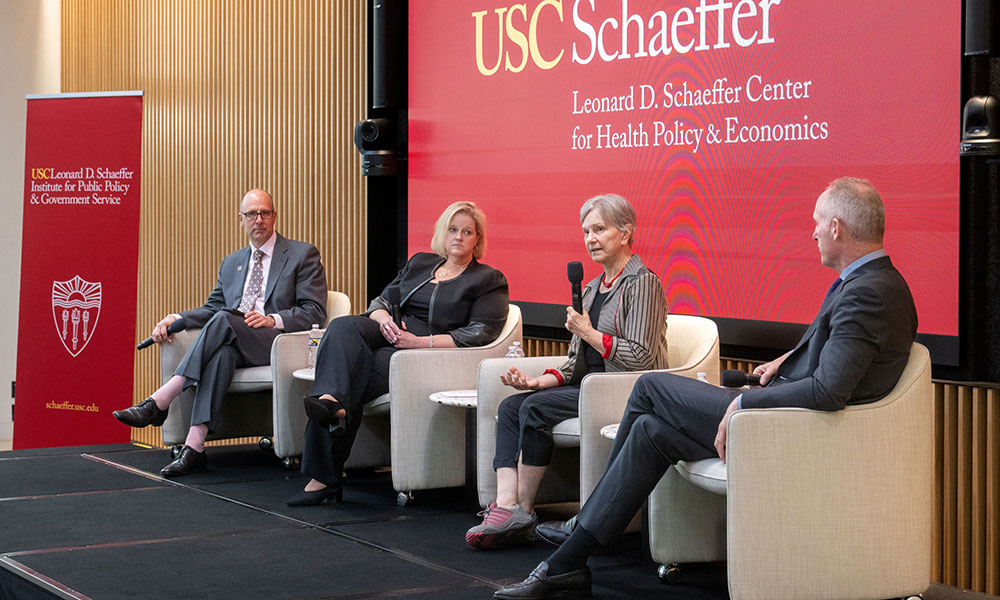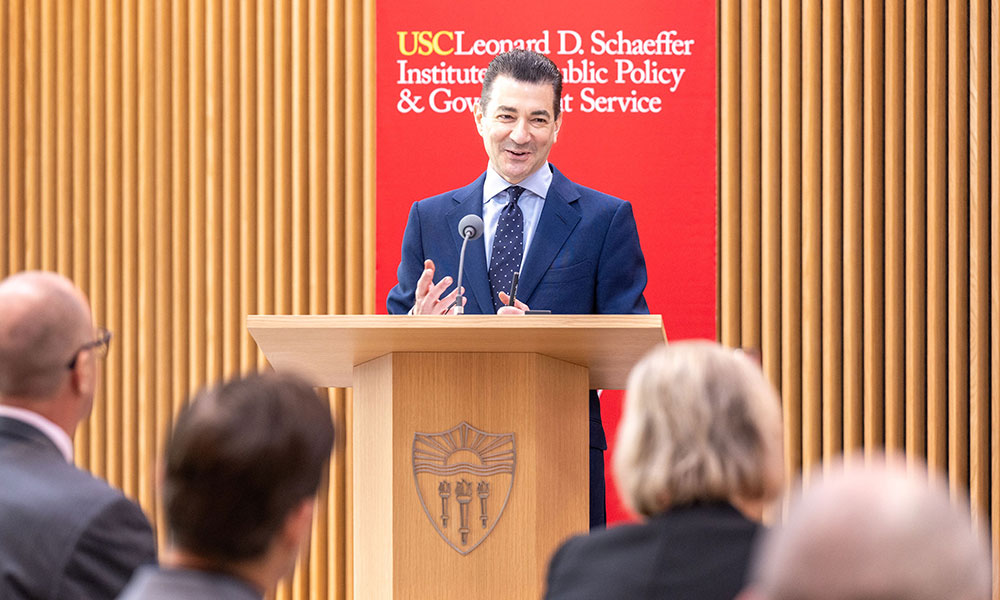Advances in rare disease treatments and clinical trial tools demand new regulatory frameworks, former commissioners say at Schaeffer Center conference
The rapid pace of medical innovation and increasingly powerful data tools that can help bring products to market faster and cheaper hold tremendous promise for patients. New cell and gene therapies are curing once-intractable rare diseases. Artificial intelligence is unlocking medical mysteries. Data-driven precision medicine is delivering personalized treatments.
To capitalize on these advances, the Food and Drug Administration must rethink its regulatory approach to foster development of innovative therapies, broaden patient access, and sustain U.S. leadership in biotechnology, former agency leaders said during a conference on FDA reform hosted by the USC Schaeffer Center.
The Sept. 19 discussion at the USC Capital Campus focused on a new Schaeffer Center white paper that provides detailed recommendations for how FDA could spur pharmaceutical innovation and safely bring new treatments to patients faster.
New approaches for new tools: Updated FDA policy frameworks that contemplate novel clinical trial methods amid a new era of highly targeted treatments could help speed up trials and generate better data, panelists said. Former FDA Acting Commissioner Janet Woodcock noted that the current drug review process was envisioned for traditional medicines treating large patient populations, rather than newer treatments for rare diseases.
“It is not a fit for the new technologies,” Woodcock said. She added that a “radical change” is needed in the way rare disease treatments are evaluated, including rethinking the role of randomized controlled trials.
Reducing uncertainty: New data tools can help leverage data from clinical practice while reducing reliance on time-consuming and costly trials. Updated FDA guidance on key trial issues could provide drug developers with greater certainty about the agency’s expectations for new approaches, ultimately reducing costs, said white paper author and former FDA Acting Chief Counsel Lowell Schiller.
“When you’re thinking about where to invest and what development pipelines to pursue, the guidance tells you a lot about what the risks are,” said Schiller, a nonresident senior scholar at the USC Schaeffer Institute.

A competitive edge: Improved use of AI and machine learning in drug development and discovery is especially important to keep ahead of rising biotech competition from China, said former FDA Commissioner Scott Gottlieb. The country’s lower labor costs and looser patient safety standards allowing for earlier in-human testing have made it an attractive destination for global investment.
“Our best lever for countering [China] is really going to be to think about how to modernize our regulatory framework, where we can streamline particularly early phases of development and give American developers the same edge in testing compounds the Chinese now enjoy,” Gottlieb said.
Rare disease treatments are a crucial area where the U.S. remains a leader and can maintain its edge by pursuing reforms like those outlined in the white paper, said ArsenalBio CEO Ken Drazan. “We don’t see rare disease medicines being developed in China, but we do see it happening here first,” said Drazan, who is also a member of the Schaeffer Center advisory board.
Enhancing early access: FDA’s accelerated approval program has provided quicker access to about 300 drugs for serious and life-threatening conditions, including rare diseases. However, the program has been controversial, and some insurers are questioning whether to cover drugs approved through this pathway.
The white paper outlines reforms that could help increase transparency around these approval decisions and support post-approval studies. Annie Kennedy of the EveryLife Foundation for Rare Diseases argued the program is working as intended and emphasized there’s opportunity to improve it in the near term.
Watch the full discussion from the Sept. 19 conference:




